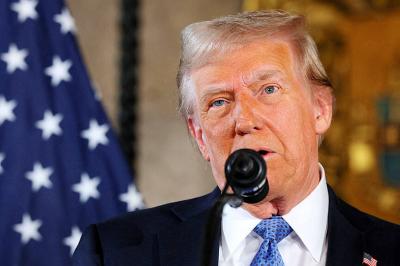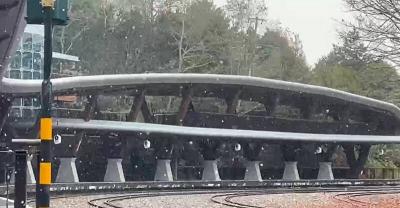The Ministry of National Defense said it would stick to a plan to buy 120 US-made M1A1 Abrams tanks in an estimated NT$33 billion (US$1.08 billion) deal.
The Republic of China (ROC) Army Command Headquarters Office said the program’s budget allocation would be made in 2017, with delivery expected to begin in 2020.
The army plans to purchase 120 second-hand M1A1 tanks from the US military to replace Taiwan’s aging M60A3 and CM-11 “Brave Tiger” main battle tanks and bolster infantry divisions’ combat strength.
Upon delivery, the 120 tanks are to constitute two battalions for deployment at the main ROC infantry base in Hsinchu County’s Hukou Township (湖口), which is tasked with the defense of the capital, Taipei, and northern Taiwan, army officials said.
The original plan was to buy the newer M1A2 tank, which has enhanced electronics and weapons control systems, but it came at a higher price tag, officials said.
The ministry elected to go with M1A1s for the estimated expense of NT$33 billion.
Officials said this follows the path taken by Australia, which upgraded its infantry with second-hand M1A1 tanks that had been kept in storage.
The US performed complete performance tests and systems checks before delivery, it added.
The ministry said it has already made public its intention to pursue the plan, with a tender announcement — labeled as project TLP04001 and calling for the procurement of new main battle tanks — placed on the government’s official procurement Web site.
However, the tender notice did not include the estimated price, or the total number of tanks by the military.
An army official who requested anonymity said the post served to conform with the Government Procurement Act (政府採購法), and referred to the purchase of US M1A1 tanks.
Top military officials have expressed concerns that Taiwan’s aging tanks are no match for China’s new Type 99 and other advanced main battle tanks deployed by the Chinese People’s Liberation Army, in terms of firepower, defense and other performance indices.
The Army Command Headquarters had presented plans in recent years to upgrade its tanks and other armored vehicles, it said.
A delay arose because most budget allocations went toward acquiring items with higher priority, including AH-64E Apache and UH-60 Black Hawk helicopters.

US President Donald Trump said "it’s up to" Chinese President Xi Jinping (習近平) what China does on Taiwan, but that he would be "very unhappy" with a change in the "status quo," the New York Times said in an interview published yesterday. Xi "considers it to be a part of China, and that’s up to him what he’s going to be doing," Trump told the newspaper on Wednesday. "But I’ve expressed to him that I would be very unhappy if he did that, and I don’t think he’ll do that," he added. "I hope he doesn’t do that." Trump made the comments in

NOT AN OPENING: Trump’s violation of international law does not affect China’s consideration in attacking Taiwan; Beijing lacks capability, not precedent, an official said Taiwanese officials see the US’ capture of the president of Venezuela as a powerful deterrent to Beijing’s aggression and a timely reminder of the US’ ability to defeat militaries equipped with Chinese-made weapons. The strikes that toppled Venezuelan President Nicolas Maduro signaled to authoritarian leaders, including Chinese President Xi Jinping (習近平), US President Donald Trump’s willingness to use military might for international affairs core to US interests, one senior official in Taipei’s security circle said. That reassured Taiwan, the person said. Taipei has also dismissed the idea that Trump’s apparent violation of international law could embolden Beijing, said the official, who was not

A cold surge advisory was today issued for 18 cities and counties across Taiwan, with temperatures of below 10°C forecast during the day and into tonight, the Central Weather Administration (CWA) said. New Taipei City, Taipei, Taoyuan and Hsinchu, Miaoli and Yilan counties are expected to experience sustained temperatures of 10°C or lower, the CWA said. Temperatures are likely to temporarily drop below 10°C in most other areas, except Taitung, Pingtung, Penghu and Lienchiang (Matsu) counties, CWA data showed. The cold weather is being caused by a strong continental cold air mass, combined with radiative cooling, a process in which heat escapes from

Snow this morning fell on Alishan for the first time in seven years, as a strong continental cold air mass sent temperatures plunging across Taiwan, the Central Weather Administration (CWA) said. The Alishan weather station, located at an elevation of about 2,200m in central Taiwan, recorded snowfall from 8:55am to 9:15am, when the temperature dropped to about 1°C, the CWA said. With increased moisture and low temperatures in the high-altitude Alishan area, the conditions were favorable for snow, CWA forecaster Tsai Yi-chi (蔡伊其) said. The last time snow fell at the Alishan weather station was on Jan. 10, 2018, while graupel fell there